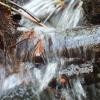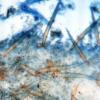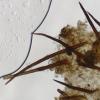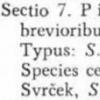
09-01-2026 17:41
Arnold BüschlenHallo, F. dilatata wird von vielen Bryoparasiten

10-01-2026 20:00
Tom SchrierHi all,We found picnidia on Protoparmeliopsis mur

07-01-2026 22:22
 Danny Newman
Danny Newman
Tatraea sp. on indet. hardwood The Swag, Great Sm

10-01-2026 01:18
 Danny Newman
Danny Newman
cf. Neovaginatispora fuckelii on indet. shrub Pre

07-01-2026 10:24
 Danny Newman
Danny Newman
Pezicula sp. on indet. hardwood Appalachian Highl

09-01-2026 10:08
 Blasco Rafael
Blasco Rafael
Hola, en el mismo habitat que la anteriorRetamaDia

08-01-2026 21:22
 Blasco Rafael
Blasco Rafael
Hola, He recogido esta muestra de Orbilia sobre Re

07-01-2026 17:29
 Marc Detollenaere
Marc Detollenaere
Dear Forum,On a barkless Populus I found some smal

10-11-2021 17:33
 Riet van Oosten
Riet van Oosten
Add-on topic http://www.ascofrance.com/forum/7059

07-01-2026 10:05
 Danny Newman
Danny Newman
cf. Chaetospermum on XylariaCosby Campground, Grea

Dear Collegues,
today we found a very short-haired Scutellinia in a small river just below a waterfall on wood in the water.
Remarkable are the very stout and short hairs (80-120 µm), which are hyalin towards the tip. A few were rooting, but most are not.
Spores with isolated (but not round) low warts, only visible in cotton-blue and 1000x magnification, 22-26 x 12,5-14 µm
The key of Schumacher leads to nothing, but in the key of Svrcek a Scutellinia pilatii is mentioned, which would fit perfectly from the short description.
Does any know this S. pilatii, or has an idea on our Scutellinia?
thank you,
Andreas
Svrcek seems to be out of step with all others if S pilatii is described as having hairs of only 280. I think you have S macrospora.
Mal

about the hair length in S. pilati:
Svrcek in his 1971 key writes hairs up to 280 um but unfortunately he didn't describe the type of base, whether it belongs to the long-haired or short-haired group. So I'm not sure whether they are really short hairs (with simple, at last bifurcate base), or less developed hairs of another type (more roots, possibly even branched). The holotype of Lachnea pilati (PRM 147295) has mostly short hairs, but in some apothecia there are middle long hairs as well. There is one apothecium that has short hairs (about 200 um at last) in the area where many samples had been obviously taken, but on its opposite side, not sampled, there is a tuft of hairs ca. 500-550 um long, decolorated in the upper half. (Seen and measured from stereomicroscope photos kindly provided by M. Šandová from PRM.) I don't know if the type contains any revision leaflet by T. Schumacher with his measurements.
Velenovský (1934: p. 308 + Plate VI no.5) describes it as: "margine [...] longe pilosa, pilis 2 mm × 25 [um], remote septatis, ochraceis, sensim acutis [...]. Pilis externis brevibus, obtusis, 2-3 septatis, [...] aliis brevibus ecoloratis.". Velenovský's description of lateral hairs goes well with Svrcek's description of hairs being colorless in the upper half or 2/3, thick, blunt or acute. On the other hand, his hairs lengths might need to be recalculated (divide by 10?), as L. pilati is listed in section "pili brevissimi" and for L. gintlii (= S. crinita fide Svrcek) he wrote hairs 5-10 mm long (p. 304). The note "affinis videtur L. Chateri" in L. pilati description refers to L. chateri ss. Velen. = Scutellinia umbrorum (fide Svrcek 1948, Bohemian spp. of subf. Lachneoideae), not Melastiza chateri.
My collection of S. pilati in the other thread (from the type locality, by the way) had also some hairs very light brown, some sompletely, some only in upper part (see attachment). But it grew on a piece of trunk that was only half-immersed in the river, all 3 apothecia well above the water level. Personally, I'm a bit cautious towards Scutellinias that grew completely immersed in running water. I have only a few such collections but they were always somehow strange, not fitting in some character or deformed somehow. I called it pilati because T. Schumacher synonymized S. rigidula under pilati. It would be interesting to hear his opinion on this theme.
Viktorie

Dear Viktorie,
thank you very much for the detailed answer.
And yes, it looked a bit strange. I had three or four apothecia, and at first glance they looked like Melatiza chateri because they were so big and intensly coloured with that very short hairs.
I found only few spores, though the apothecia were already 1,5 cm in diam. Some spores were about 21-22 x 13 µm, two spores were bigger and I thought them to be mature with 26 x 14 µm.
Very strinking the short haits, more or less colourless at top and pnly light brown in lower half, with no root or raraly one root, and with this strange strangulation at the septae.
best regards,
Andreas
Mal

S. pilati is listed with hairs below 1000 um actually, but S. rigidula - its synonym - is in group with hairs over 1000 um long. But Schumacher states he didn't find any significant difference between them. Translation of Svrcek's key from lead 9:
9a. hairs, including those on margin, shorter than 1 mm
- 10b. ornamentation indistinct or very delicate in optical section (= "spore wall view" by Benat), distinguishable only with a strongly magnifying objective with oil immersion [lens] and after staining with Cotton blue
- 19b. spores ellipsoid to broadly ellipsoid, not subglobose (length : width = 1 : 0,5-0,6 [i.e. Q = 1,66-2])
- 20a. hairs dark reddish brown but only in lower third or up to the half, otherwise yellowish to hyaline, short and thick (up to 280 × 42 um), bluntly cylindric or acute. On wood in water ... S. pilati (Velen.) Svrcek
- (note that further in this group is S. subcervorum (lead 23a), described below with hairs 300-600 um long, which Schumacher synonymized under S. crinita. Immature short-haired collection?)
9b. at least some marginal hairs longer than 1 mm
- 26c. ornamentation indistinct in optical section, even under strongly magnifying objective (60×) not distinguishable
- 27b. spores 19-27 × 11-17 um, mostly broadly ellipsoid
- 28b. spores 22-27 × 14-17 um, very fine "amoeboid" warts, up to 0,5 um in diameter, sometimes interconnected and making up short sinuate strings ... S. rigidula (Velen.) Svrcek
I wonder what is the purpose of hairs in Scutellinia. If they prevent hymenium dessication by closing over it during dry weather (and their pigmentation could then catch some portion of strong sunlight), it would make sense that in collections developing permanently under running water are the hairs reduced and faded.
But back to Andreas's collection. I just checked the photos of my collection of S. cf. nigrohirtula growing on wood under running water and the spores (shape, ornamentation) look actually very similar to this one! Within few days I'll put together photos of my collections ID'd as pilati + the immersed one and post here some link to them.
Viktorie

Hello,
Scutellinia nigrohirtula would have been the species I'd expect in this kind of biotope.
I thought the very pale hairs and the too narrow spores untypical for nigrohirtula.
On the other hand, for Sc. macrospora Schumacher give fusoid spores, that what I can not see in the spores of my collection, and also the spores would be in the lowest range of the given length (or even below).
It was remarkable, how dense the hiars were at the margin - a feature for Sc. nigrohirtula, isn't it ...?
We have found more Scutellinias in/under water today, may be we have the same again ....
best regards,
Andreas






